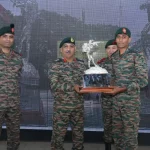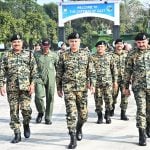Tejas is a multirole fighter. Multirole fighters are such planes which are designed in such a way that they can quickly switch between multi-roles (like attack, fighter etc.). Multirole fighters are comparatively more economical in comparison to typical fighter aircrafts. Dassault Mirage-2000 is one such multirole fighter which performed exceptionally well during the 1999 Kargil war, which encouraged India to acquire more aircrafts of such type.
Why is Tejas Special?
Tejas has several reasons associated with it which make it special. These reasons are:
- Tejas is special aircraft because it is being indigenously developed by Hindustan Aeronautics Limited (HAL).
- It is second supersonic aircraft after HAL Marut which is being developed by HAL.
- It is a tail-less aircraft, that is it has no tailplanes or canard.
- Tejas integrates technologies such as relaxed static stability, fly-by-wire flight control system, multi-mode radar, integrated digital avionics system, composite material structures, and a flat rated engine.
- It incorporates a ‘glass cockpit’ in which information is displayed in ‘real-time’ to the pilot.
- Tejas is supersonic and highly maneuverable, and is the smallest and lightest in its class of contemporary combat aircraft.
- It’ll serve both Indian Air Force and Navy.
Specifications:
- Tejas is a light combat aircraft.
- It is single seat, single engine multirole light combat aircraft.
- It has pure double delta wing configuration, with no tailplanes or canard, and a single dorsal fin.
- It has a length of 13.20 m (43 ft 4 in), wingspan of 8.20 m (26 ft 11 in) and height of 4.40 m (14 ft 9 in).
- It has a maximum speed of Mach 1.6 (1,350 km/h) calibrated airspeed (CAS) at high altitude, reached in testing of IOC-I and theoretically capable of Mach 1.8.
- It is mounted with 23 mm twin-barrel GSh-23 cannon with 220 rounds of ammunition.
- Air to air, air to surface and anti-ship missiles are mounted on this aircraft.
- Several Bombs and rockets are also mounted.
Where is Tejas now?
This all-weather aircraft is being extensively tested by HAL in its divisions in Bangalore, Lucknow, Hyderabad, Nashik etc. It was cleared for use in 2011 for Air Force Pilots. It received its third operation clearance in December 2013 and to receive its final operational clearance it needs to be certified on six more criteria’s. It was expected to receive its FOC by 2014, but it is pushed away a little. Tejas will hopefully be inducted by the end of 2014.










